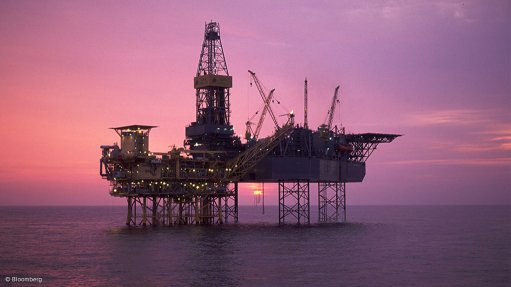
Photo by: Bloomberg
South Africa should be focusing more on oil and gas developments, given its expansive resources, and the next 18 months to three years would be critical to shaping the trajectory of the emerging industry, Webber Wentzel director and head of the oil and gas sector group John Smelcer said on Tuesday.
Speaking at the Gas Week conference, in Bryanston, he said that, 50 years from now, regions generally known as mining jurisdictions would shift into petroleum jurisdictions, as South Africa’s discovery of vast resources become a tipping point for economic development.
The next few years would determine the exact scope of the potential impact of the large-scale gas discoveries commonly described as an economic game-changer, not only for South Africa, but also for its neighbouring countries that had also discovered substantial reserves.
“There has already been a bit of a time slippage; nevertheless, the next few months will be important,” he said.
Natural gas could change the energy dynamic in the country, South African Oil and Gas Alliance executive chairperson Mthozami Xiphu told delegates at the conference.
Although demand for gas as an energy source was growing, natural gas only accounted for 2% of the country’s energy mix; however, President Jacob Zuma’s emphasis on shale gas development in his State of the Nation Address earlier this month was encouraging.
Xiphu said South Africa ranked 100th worldwide for natural gas reserves, but the country had significant potential for coal-bed methane, which ranked number 12 in the world, and shale gas, at a ranking of eight.
The nation’s potential reserves had reached 390-trillion cubic feet (tcf), with excitement around these discoveries “justifiable”.
And given the proximity to other large-scale gas finds in the region, South Africa’s offshore resources were also expected to be substantial.
Mozambique boasted estimated discoverable gas reserves of between 200 tcf and 250 tcf, with 40% of the world’s discoverable gas in 2012 emerging from the Southern African country.
Mozambique, with a current gross domestic product (GDP) of $12.8-billion, was likely to become the world’s third-largest exporter of liquefied natural gas (LNG), behind Qatar and Australia, with an agreement in place to build a $50-billion LNG plant – the world’s second largest.
Smelcer cited Qatar’s success, pointing out that the country, with reserves of about 990 tcf, had grown its GDP from $17.5-billion in 2001 to $170-billion by 2011. It is a growth story that could be echoed through the development of the Southern African region’s gas reserves.
Meanwhile, Tanzania and Botswana recorded estimated recoverable gas reserves of 45 tcf to 60 tcf and 196 tcf respectively.
“The potential is profound,” Smelcer stated.
But challenges remained, including the need to face up to the unprecedented scale of investment needed in the region, the availability of long-term sale and purchase agreements and the possibility of LNG sales at Asia market pricing increasingly coming into question.
Regulatory limitations and the execution of large-scale projects remained “incredibly” challenging even in the “best of environments” and were likely to present further barriers.
Further, the lack of or limited infrastructure and skills also raised obstacles to the industry’s development.
But Xiphu said that if South Africa moved to support LNG imports, which could occur within three to four years, it could start the process of expanding its market and deliver an opportunity to develop skills prior to the commercialisation of its onshore and offshore reserves.
He believed that, within five to seven years, South Africa could commercialise its onshore resources, weaning it of its reliance on imports, and within seven to ten years, it could commercialise its offshore resources.